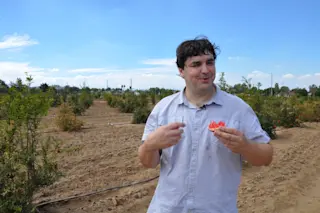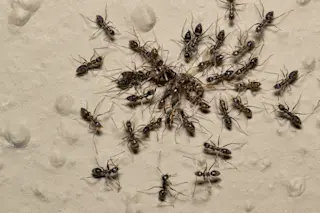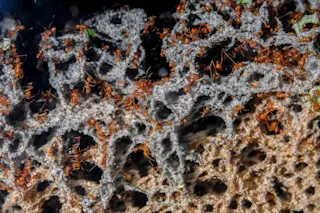There’s a lot more to pomegranates than their reputation in the U.S. would suggest. The fruits are known for their bittersweet juice, hard seeds, and their exploding-puzzle-box configuration that can leave kitchens looking like crime scenes.
Around the world, pomegranates take on many different forms. They can be sweeter, softer, or come in different flavors and colors: pink, yellow, or even white, instead of the U.S.-standard red. Ask someone from Iran, India, Turkmenistan or Spain who grows the best pomegranates, and they’d likely say Iran, India, Turkmenistan or Spain, respectively. But none of these foreigners would think too highly of a U.S. pomegranate, according to John Chater, a geneticist at the University of California, Riverside, and major pomegranate aficionado.
“So many people will come up to me and say, why are the pomegranates in the United States so terrible? Why can’t I find the same flavors that I’m getting back ...














